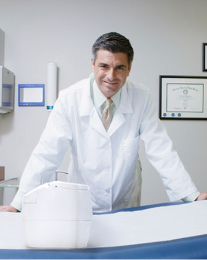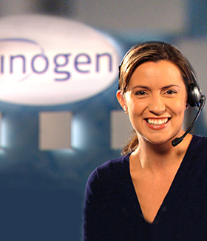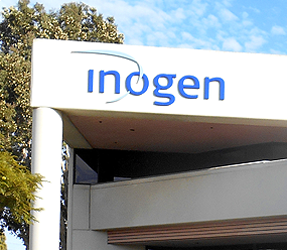What Is an Oxygen Tank?
Oxygen tanks are a type of storage system that holds oxygen or liquid oxygen in a pressurized container. The size and appearance of an oxygen tank can vary depending on the purpose of the container, where it is used and the mobility requirements.[1]
Using Oxygen Tanks in Medical Therapy[2]
Oxygen therapy (also referred to as supplemental oxygen) helps people with lung diseases or breathing problems get the oxygen their bodies need to function. This oxygen is supplemental (additional) to what you breathe in from the air. You may need oxygen therapy if you have:
- Asthma, bronchitis or emphysema.
- Chronic obstructive pulmonary disease (COPD).
- COVID-19.
- Cystic fibrosis.
- Heart failure.
- Lung cancer or other cancers.
- Pneumonia.
- Pulmonary fibrosis.
- Sleep apnea.
Note: People who live in or visit high-altitude areas may also need supplemental oxygen, including mountain climbers.
Oxygen therapy delivery systems include: compressed gas cylinders or tanks, liquid oxygen containers, and oxygen concentrators typically delivered through a nasal cannula or face mask. A mask is placed on the individual’s face over the mouth and nose, while a nasal cannula is placed directly in the nostrils.
A compressed gas oxygen tank is a large, metal cylinder that stores 100% oxygen as a gas under pressure.
The cylinder has a regulator to control the flow of oxygen. An oxygen-conserving device sends oxygen when you inhale and stops oxygen flow when you exhale. These tanks eventually run out of oxygen. A gauge shows the tank’s oxygen levels. When the tank is empty, an oxygen supplier replaces it. You should always have extra oxygen tanks on hand.
How to Use an Oxygen Tank to Administer Oxygen[1]
Oxygen tanks are delivered by an authorized medical supplier. When your oxygen is delivered by the company, the supplier will show you how to begin the flow of oxygen and also turn it off. To get started at home with a metal tank, attach the regulator or conserver if you use one. Then attach your nasal cannula or face mask and turn on the oxygen to the prescribed flow rate. If you are using a conserver, you won’t feel oxygen flow out of the nasal cannula until it is connected and you take a breath. You can be mobile while using metal oxygen tanks. Tanks can be wheeled around in tank carriers for patients that need high flow rates and smaller tanks can be carried in bags with over the shoulder straps. Single tanks not in carriers or in use should be kept lying flat so they do not fall over. Your oxygen delivery company will drop off new tanks when it is time for a refill. Your healthcare provider will recommend the right size tank for you based on how much extra oxygen your body needs.
Medical Oxygen Tank Safety[3]
Many patients who use home and portable oxygen tanks wonder about oxygen tank safety and the safety of storing the tanks. Oxygen is a safe gas and is non-flammable; however, it supports combustion. Materials burn more readily in an oxygen-enriched environment. Always follow the instructions from your oxygen supply company regarding safe usage. Never change the flow rate on your oxygen from what your doctor prescribed.
Precautions around oxygen use safety are as follows:
- Don’t smoke and don’t allow others to smoke near you. Post “No Smoking” and “No Open Flames” signs in and outside your home to remind people not to smoke.
- Keep sources of heat and flame at least five feet away from where your oxygen unit is being used or stored.
- Don’t use oxygen while cooking with gas.
- Don’t use any electrical appliances such as hair dryers, curling irons, heating pads and electric razors while wearing oxygen.
- If you wear oxygen while sleeping, consider using 100% cotton bedding which is less likely to cause static electricity.
- Always have a fire extinguisher nearby.
- Don’t use aerosol sprays such as air fresheners or hairspray near the oxygen unit. Aerosols are very flammable.
- Avoid flammable creams and lotions such as vapor rubs, petroleum jelly or oil-based hand lotion. Use water-based products instead.
- Never oil the oxygen unit, and don’t use it with oily or greasy hands.
- Don’t use alcohol-based hand sanitizers, unless you thoroughly rub them into your skin and let your hands dry completely before handling oxygen equipment.
- Store Oxygen Safely:
-
- Keep your liquid oxygen unit upright at all times, never on its side.
- Don’t store your oxygen in an enclosed space, like a closet or trunk.
- Be careful not to trip over the tubing. Never cut your tubing or use more than a 50-foot long piece.
- Turn off your oxygen when you’re not using it. Don’t set the cannula or mask on the bed or a chair if the oxygen is turned on.
- Keep oxygen concentrators several inches away from walls or curtains and never place anything over your concentrator.
- Never use an extension cord to plug in your concentrator or plug anything else into the same outlet.
- Have a functioning fire extinguisher and smoke alarms close by at all times.
- Strictly follow the safety instructions provided by the oxygen supply company and the manufacturer.
HOW TO IMPROVE YOUR OXYGEN USE SAFETY
Once you know how to use an oxygen tank safely and take the proper safety measures, you can ensure that your oxygen use safety is suitable for regular oxygen treatment. However, if you would prefer a method of oxygen delivery that doesn’t require tanks, managing tank levels and supplier deliveries, you may want to consider using an oxygen concentrator instead.
When it comes to oxygen use safety, oxygen concentrators are safer than compressed gas cylinders. Because oxygen concentrators pull oxygen from the surrounding air, compress and purify it, rather than storing oxygen for later use, they do not leak, which may reduce the danger of combustion. Personal oxygen use safety should be a consideration as well, and because oxygen concentrators do not need to be refilled, you can receive oxygen continuously as long as your battery is charged or you have access to power. [4] Oxygen concentrators are safe to use at home or while traveling, including during air travel. [2]
If you are unsure how to decide whether the oxygen tank or oxygen concentrator delivery system is right for you, learn about the pros and cons of oxygen tanks and oxygen concentrators here
INOGEN OXYGEN CONCENTRATORS AND OXYGEN USE SAFETY
Offering both stationary and portable oxygen concentrators, Inogen has designed each concentrator to work safely, quietly and efficiently to improve lives through respiratory therapy. Each Inogen oxygen concentrator can be used continuously as long as you have power or battery life, making them safe for use 24 hours a day, 7 days a week. For users traveling by air, all Inogen One portable oxygen concentrators meet FAA acceptance criteria for POCs used onboard aircraft.*
Inogen oxygen concentrators are safe, but it is always a good idea to maintain oxygen use safety precautions when using any oxygen concentrators. Plus, if you use a home concentrator, your supplier might also provide you with a large “back-up” metal tank that can last 24 hours, should the power go out.[1] Follow all safety instructions provided with your concentrator system and make sure you stay away from open flames, cigarettes and heat sources, as well as avoiding petroleum-based products.[3] When traveling with either your Inogen One G5, Inogen One G4 or your Inogen One G3 Portable Oxygen Concentrators, make sure you start your car before turning on your concentrator or charging it. Do not use your portable oxygen concentrators while they are in the trunk of a car, and never leave them in your vehicle. Allow a cold oxygen concentrator to warm up before use and ensure that the inlets and outlets of the portable and stationary oxygen concentrator units are never blocked.
Simply follow the instructions and experience peace of mind and mobility that an Inogen oxygen concentrator can offer. There is no need to be weighed down by cumbersome oxygen tanks or worry about tank leaks. With Inogen Oxygen Concentrators, you can safely use oxygen at home or away, all day, every day.
Frequently Asked Questions: Oxygen Tank Safety
What are the dangers of oxygen tanks?
Oxygen use safety is different depending on the delivery system you use for your medical oxygen. There is a risk of leakage with oxygen tanks, particularly if you do not know how to use an oxygen tank safely. With the risk of oxygen leaks comes an increased risk of fire and/or explosion as oxygen feeds a fire and makes it burn hotter, so it is essential to avoid all open flames and keep a safe distance from other heat sources. It is also important to avoid using flammable products, particularly petroleum-based, on your body when using medical oxygen. [3] Make sure you talk to your oxygen supplier about oxygen tank safety and how to make sure you have all of your tubing and mask or cannula connected properly to minimize the likelihood of leaks. You should also ensure that you know how to properly fill smaller, portable oxygen tanks correctly so that oxygen does not leak. Finally, make sure you do not adjust the flow of your oxygen without first speaking to your doctor. [1]
What should you avoid while on medical oxygen?
The most important thing to avoid is being near fire or open flames, so that includes smoking. Many patients requiring oxygen are smokers, but it is critical that all open flames be avoided to avoid the increased risk of fire or explosion. Do not take chances with oxygen use safety. Avoid all heat sources when using oxygen tanks or concentrators, and if you are unsure, talk to your supplier or doctor first. [3]
Can I cook while using oxygen?
Oxygen use safety while cooking depends entirely on how you intend to cook. Ideally, you should remove your oxygen before cooking at all, and if you intend to cook on the stove or in the oven, removing your oxygen first is essential. However, if you must cook while receiving oxygen therapy, you can use a microwave oven while using oxygen. Just make sure that you do not place any metal inside the microwave, and stand 6 feet away while it is running. [3]
Are used oxygen tanks safe to use?
Oxygen is a safe gas and is non-flammable; however, it supports combustion. Materials burn more readily in an oxygen-enriched environment.[3] Medical oxygen is classified as a pharmaceutical, which means that oxygen tanks are regulated by the Food and Drug Administration (FDA). In order to ensure that your oxygen tank, and oxygen contained within that tank, is medically sound, safe and pure, manufacturers and authorized oxygen suppliers must meet the requirements outlined by the FDA.[5] As such, they must be certified to provide and/or refill medical oxygen tanks to ensure that the tanks are safe to use.[5] Also follow the instructions from your oxygen supply company regarding safe usage. Never change the flow rate on your oxygen from what your doctor prescribed.[3]
Can you travel with an oxygen tank?
Oxygen tanks are safe to travel with if you are traveling by car, train[6] or cruise ship[7]. Oxygen tanks are not permitted on airplanes.[8] If you intend to travel by car, train or boat, you will need to plan ahead by bringing a sufficient supply of oxygen. Check with your travel companies to see how many tanks are permitted and find out if there are any restrictions. Never store oxygen supplies in your luggage; oxygen tanks must be stored upright and secured well before your trip gets under way.[3] Always check for leaks before you go.
What’s the safest way to store an oxygen tank?
Oxygen tanks must always be stored upright, in a well-ventilated area, well away from any heat sources. Ideally, they should be secured in a stand or cart that will prevent them from tipping over or falling. It is essential that you keep your oxygen equipment at least 5 feet away from all open flames or electrical appliances or other items that could produce sparks.[3]
Is an oxygen tank the same as an oxygen concentrator? Do these safety tips apply?
Oxygen tanks and oxygen concentrators are different oxygen delivery devices. While a tank contains a finite amount of liquid or compressed oxygen, an oxygen concentrator pulls from the surrounding air to purify and concentrate oxygen for you.[2] Some safety tips are common to both oxygen delivery devices: including keeping your oxygen system away from heat sources and in a well-ventilated area and ensuring that you do not use flammable products while receiving oxygen therapy. There are also different safety requirements: oxygen concentrators cannot leak, so they are less likely to create an oxygen-rich environment.[4] Additionally, oxygen concentrators are portable, which is why many are FAA approved* for air travel.[2]
*check with your local carrier
References
- https://www.lung.org/lung-health-diseases/lung-procedures-and-tests/oxygen-therapy/
- Supplemental Oxygen Therapy: Types, Benefits & Complications (clevelandclinic.org) https://my.clevelandclinic.org/health/treatments/23194-oxygen-therapy
- Using Oxygen Safely | American Lung Association
- Oxygen delivery devices_equipment_www.ncbi.nlm.nih.gov-pmc-articles; PMC6876135; EDU-0204-2019.pdf (nih.gov)
- “Compressed Medical Gases.” Compliance Program Guidance Manual, Food and Drug Administration, 15 March 2015, https://www.fda.gov/media/75194/download
- https://www.amtrak.com/accessible-travel-oxygen-equipment
- Can i take oxygen on a cruise ship? – TRAVELWITHOXYGEN
- www.uptodate.com-contents-supplemental-oxygen-on-commercial-airlines-beyond-the-basics












